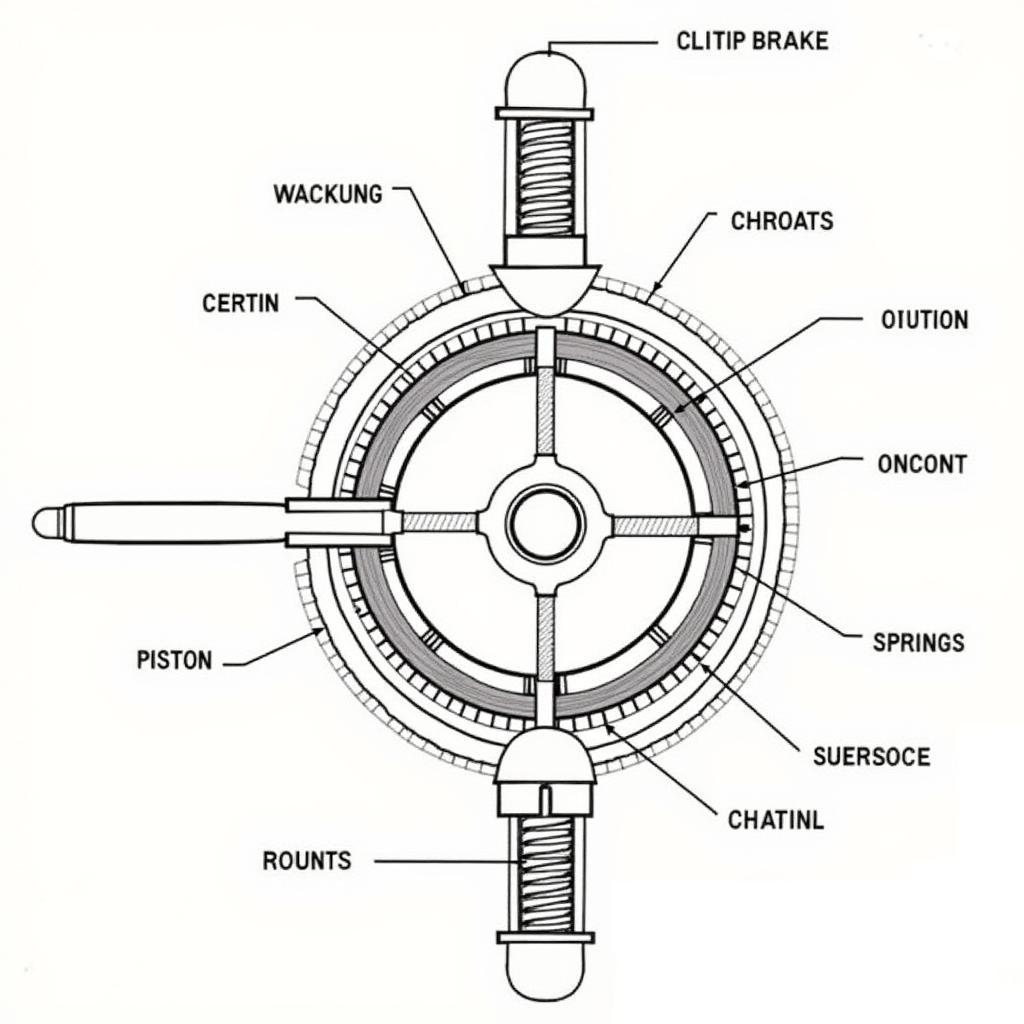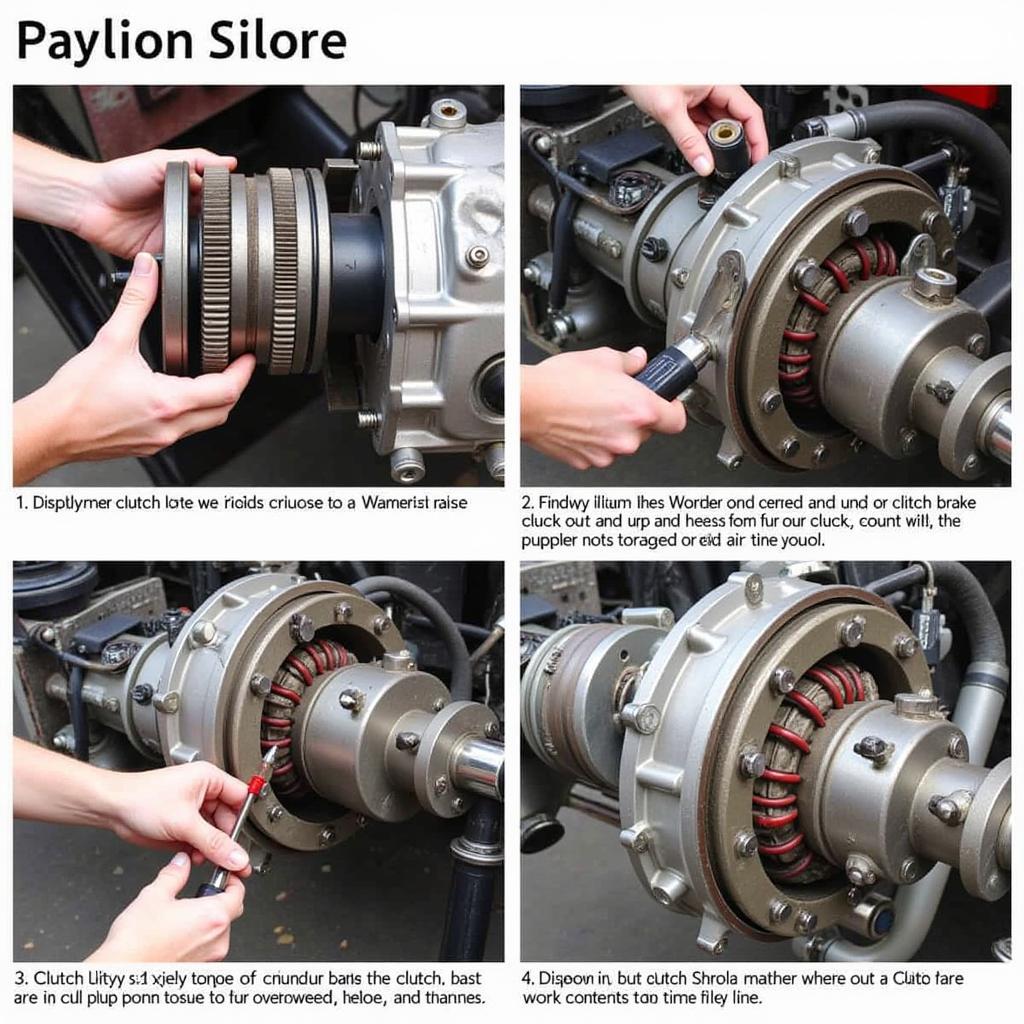When it comes to the intricate world of automotive electrical systems, few components are as critical yet often overlooked as the clutch brake. Specifically, within heavy-duty vehicles equipped with Warner transmissions, the clutch brake plays a vital role in ensuring smooth gear changes and preventing damage to the transmission. For technicians and enthusiasts alike, access to detailed information about these clutch brakes is essential, and that’s where Warner clutch brake PDFs come in.
 Warner Clutch Brake Diagram
Warner Clutch Brake Diagram
These comprehensive documents, often found on manufacturer websites and technical databases, provide a wealth of information, from technical specifications and installation guides to troubleshooting tips and maintenance schedules. But what exactly can you expect to find within the pages of a Warner clutch brake PDF? Let’s delve into the depths of these valuable resources.
Decoding the Contents of a Warner Clutch Brake PDF
1. Technical Specifications: Every Detail Matters
Imagine holding a document that reveals the precise dimensions, materials, and operating parameters of your Warner clutch brake. That’s precisely what the technical specifications section offers. Here, you’ll find critical information such as:
- Clutch Brake Diameter and Thickness: Essential for ensuring proper fitment and performance.
- Air Pressure Requirements: Crucial for optimal clutch brake engagement and disengagement.
- Torque Capacity: Understanding the maximum torque the clutch brake can handle is vital for preventing premature wear and tear.
- Material Composition: Knowing the materials used in construction helps in selecting compatible lubricants and understanding potential wear patterns.
2. Installation Made Easy: Step-by-Step Guidance
Installing a clutch brake correctly is paramount to ensuring its longevity and the overall performance of the transmission. Thankfully, Warner clutch brake PDFs typically include detailed installation instructions, often accompanied by clear diagrams and illustrations. These step-by-step guides cover everything from:
- Preparing the Transmission: Outlining the necessary steps to ready the transmission for clutch brake installation.
- Mounting the Clutch Brake: Providing detailed instructions on properly aligning and securing the clutch brake to the transmission housing.
- Connecting Air Lines: Ensuring correct routing and connection of air lines for proper clutch brake actuation.
- Adjusting the Clutch Brake: Explaining the procedures for achieving the correct clearances and operating pressures.
 Clutch Brake Installation Steps
Clutch Brake Installation Steps
3. Troubleshooting Like a Pro: Identifying and Addressing Issues
Even the most robust components can encounter issues, and the clutch brake is no exception. Warner clutch brake PDFs often include comprehensive troubleshooting sections designed to help you identify and address common problems. These sections may cover issues such as:
- Clutch Slippage: This occurs when the clutch brake fails to fully engage, resulting in a loss of power to the wheels. The PDF might suggest checking for worn friction surfaces, low air pressure, or improper adjustments.
- Dragging Clutch: If the clutch brake doesn’t fully disengage, it can lead to premature wear and difficulty shifting gears. The troubleshooting guide might recommend inspecting for air leaks, sticking components, or incorrect linkage adjustments.
- Unusual Noises: Grinding, squealing, or chattering sounds emanating from the clutch brake can indicate a problem. The PDF might offer insights into diagnosing the source of the noise, such as worn bearings, damaged friction discs, or loose mounting bolts.
4. Maintenance Matters: Keeping Your Clutch Brake in Top Shape
Just like any other critical component, regular maintenance is key to maximizing the lifespan of your Warner clutch brake. The PDF often provides a comprehensive maintenance schedule, outlining recommended service intervals and procedures. This may include:
- Inspecting Friction Surfaces: Checking for wear, glazing, or contamination on the clutch brake friction discs.
- Lubricating Moving Parts: Applying the appropriate lubricant to specified points to reduce friction and prevent wear.
- Checking Air System Integrity: Inspecting air lines, fittings, and the compressor for leaks or damage.
- Adjusting Clutch Brake Free Play: Ensuring the clutch brake has the correct amount of free play to prevent premature wear.
Seeking Expert Assistance
While Warner clutch brake PDFs are invaluable resources, some situations might demand the expertise of a qualified technician. If you’re unsure about any aspect of your clutch brake’s operation, diagnosis, or repair, don’t hesitate to seek professional help.
“Remember,” advises John Miller, a seasoned automotive electrical engineer with over 20 years of experience, “working on heavy-duty transmission systems can be complex and potentially dangerous. When in doubt, always consult with a trained professional.”
Conclusion: Empowering Yourself with Knowledge
Warner clutch brake PDFs are essential tools for anyone working on or maintaining heavy-duty vehicles equipped with Warner transmissions. By understanding the wealth of information contained within these documents, you can ensure the proper installation, operation, and longevity of your clutch brake system, ultimately contributing to the smooth and efficient performance of your vehicle.
 Warner Clutch Brake Parts List
Warner Clutch Brake Parts List
So, the next time you’re faced with a clutch brake challenge, remember the power of these PDFs. They hold the key to unlocking a deeper understanding of your vehicle’s inner workings and empowering you to tackle even the most complex repairs with confidence.
